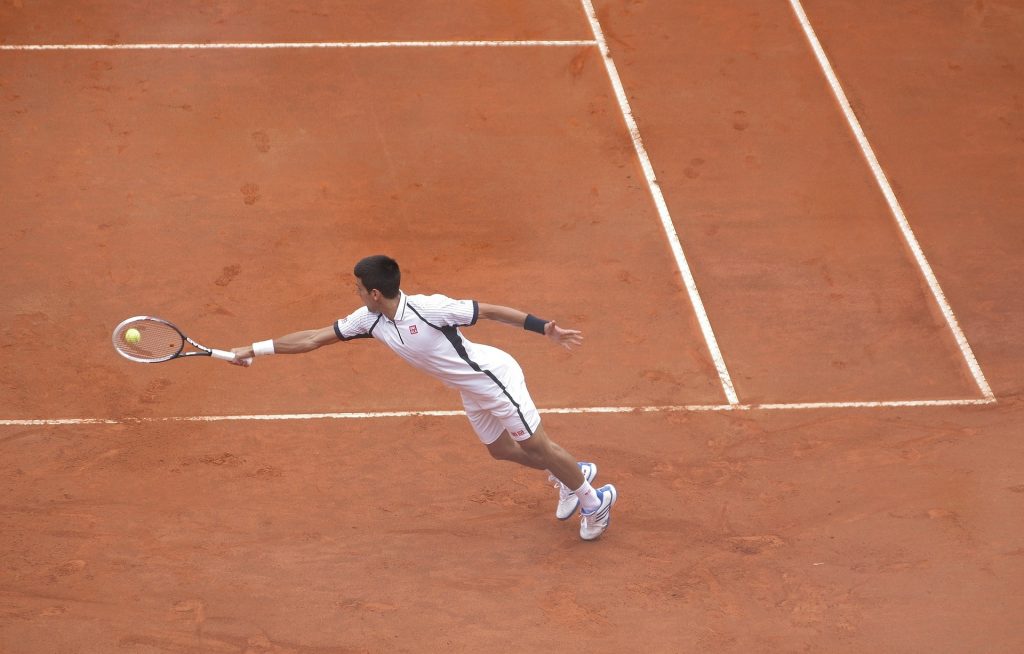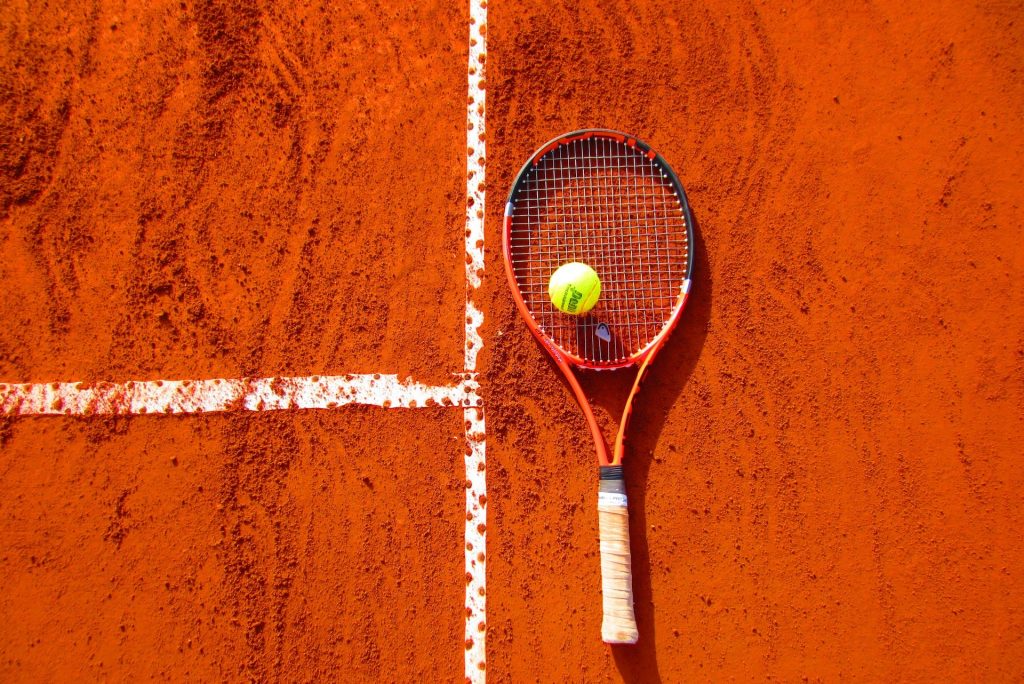Types of Tennis Matches
Tennis matches come in various formats, and the length of a match depends on the type of match you are playing. The most common tennis match format is a best-of-3 set match which can range from a few minutes to several hours, depending on the players involved. Other tennis match formats include best-of-5 and super tiebreakers. Let’s take a closer look at the different types of tennis matches and how long they typically last.
Singles Tennis Matches
Singles tennis matches are played on a traditional full-sized court and usually consist of two sets, meaning the first to reach six games, with a tie-break being used if the same player wins all games and wins the set. The number of locations required to win the match is determined before play begins; typically, matches are decided in three or five sets. A point is awarded every time one of the players earns a win over their opponent.
The length of singles tennis matches can vary greatly and depend on several factors, such as the skill level of players, the conditions (general weather, type of court surface), and even their style of playing and strategy. Generally speaking, singles tennis matches tend to last between 1 – 4 hours; however, tournament or championship matches may be much longer due to additional breaks for rest/hydration built into tournament protocols and media time-outs. On average competitive singles and tennis matches tend to last around 2 – 3 hours though extreme cases have been reported in which single professional recognition has exceeded 6 hours!

Doubles Tennis Matches
Doubles tennis matches are most commonly played in two sets, which consist of six main games. A tie-breaker is used in 5 and 6-game situations if the score reaches a specific score, usually 6-6. In a tie-breaker, each team gets one point for every point they win, plus a seventh and deciding point if applicable. Set times can vary depending on each player’s precision and intensity – but typically, it takes thirty to forty-five minutes to finish one set. Matches usually consist of two sets (possibly three sets) and are sometimes considered complete within an hour.
Similar to singles tennis rules, an advantage set can be used instead of a regular set if the players agree upon it before the match begins. An advantage set consists of a best-out-of-nine-games format with no tiebreaker; the winner will have to win by at least two points. The game ends when there is an outright winner between the two sides as opposed to sets won by each side like in singles tennis rules. Games won often take about twenty minutes, with the team that wins have more than five games being declared the winner at the end.
Length of a Tennis Match
The average length of a tennis match can vary depending on the players, court surface, and tournament format. Generally, men’s matches tend to last longer than women’s matches. Factors such as the degree of difficulty of a given game and the number of sets being played also influence the duration of a tennis match. Let’s explore further details on the length of a tennis match.
Best-of-Three Sets
In men’s professional tennis, the length of a match is determined by the format used. The most common format is three sets, each typically consisting of six games. The winner of a best-of-three match must win two sets to emerge victorious. The duration of a best-of-three tennis match can vary greatly, depending on how long each set takes to complete and whether tiebreakers are involved.
As a general rule of thumb, most professional men’s matches can be expected to take anywhere from one and a half to two and a half hours. High-profile matches featuring top players may last even longer, mainly if there are tiebreaks in more than one set. Women’s matches typically last shorter than men’s due to their shorter sets (usually the best of two rather than three).
For casual players who don’t need to adhere to strict tournament regulations, an abbreviated version of the professional game can be played using what is known as pro-set scoring. In pro-set scoring, the players play just one set instead of three; but unlike regular one-set matches, this type ends after eight games — instead of six — with no tiebreaks required (so it can go on until one player gets at least nine points). Usually lasting between twenty minutes and an hour in total duration, pro set scoring provides an exciting change of pace from traditional match play while preserving some level of competitive challenge.
Best-of-Five Sets
The length of a tennis match can vary considerably depending on several factors, including the format (best-of-five or best-of-three sets), the skill level of the players, and the type of court surface used.
Each set is usually played in a best-of-five set tennis match until one player wins six games. If the score reaches six games all, then a tiebreak is played to decide the winner of that set. Once all five sets have been completed, whichever player wins three or more sets is declared the winner.
The average duration for best-of-five-set matches for professional players can range from about 2 and a half hours to over 5 hours. Professional women’s matches tend to run a bit shorter than men’s matches due to having fewer (or no) tiebreaks in individual sets. The time slot allocated for third-round matches at major tournaments will usually specify if it is a best-of-five or best-of-three format. This information should be confirmed by checking tournament rules before play begins.
In professional tournaments where it can be beneficial to make up time lost during rain delays or other interruptions in play, mats may sometimes use shortened formats such as 8-game pro sets (first player to 8 with no tiebreaks).
Factors That Influence Match Length
Several variables can determine the duration of a tennis match. These can range from the type of match being played, the players’ playing style, the number of breaks taken, and even the court surface. Let’s investigate further into the factors that influence match length and discuss what determines how long a tennis match can last.
Number of Games Played
Match length can be determined by the number of games that need to be played for one player to win. The most common format for professional tennis matches is a best-of-three format, meaning the winner is the first player to win two out of three sets. Best-of-five sets are usually played in the Grand Slam tournaments. Although this might indicate how long a match could take, many other factors come into play when estimating the exact duration. These include match intensity, the total number of points, the number and length of breaks, baseline and net play styles, and both players’ serve speed and accuracy, and other strategic decisions that were taken during a match.
Number of Sets Played
The number of sets, or games, played in a tennis match can affect its length. Professional men’s singles are currently composed of a best-of-three sets format, except Grand Slam tournaments where best-of-five (also known as a “decider”) is the only allowed format. Professional women’s singles competition in a best-of-three set format.
Matches at the recreational level generally follow a similar pattern, though the number of sets may vary depending on tournament rules and availability of court time. For example, some recreational players prefer to play three sets that are six games each instead of two sets that are ten games each for time constraints or other reasons.
Each particular set’s length can also impact match length as scores reach deuce (40 all) multiple times during an extended rally and thus add minutes to its duration. Additionally, some tournaments employ tiebreakers and no-ad scoring rules, which help speed up match time by eliminating long rallies and deferred points count due to ad calls.
Player’s Style of Play
A player’s style of play significantly impacts the length of a match. For example, a player who hits hard and flat serves will be able to endpoints more quickly, while a player who relies on the spin to win points may require longer rallies. Thus, matches involving power players tend to move faster than those thaincludeve strategists or all-court players. Additionally, player fatigue becomes more of an issue in longer matches and can further influence their play styles. For instance, a tired player might rely more on the power shots they still have energy for than longer points with strategic positioning requiring more energy to execute.

Rules and Regulations
Understanding the rules and regulations of a tennis match is essential to knowing its length. Tennis rules have evolved, and now various professional tournaments have their regulations. Generally, the size of the match depends on the game and the number of sets to be played. Standard regulations in professional tennis are the rules concerning the number of sets, tiebreaks, and player substitutions. Let’s explore each of these topics in depth.
Time Limits
A tennis match must be played by the official rules established by the International Tennis Federation (ITF). The match will occur over a predetermined number of sets, depending on the format used. Generally, a men’s singles match is best-of-five (three or five sets to win), while women’s singles matches are often best-of-three (two or three sets to win). Doubles and mixed doubles matches will be either two out of three sets or three out of five.
The rules determine the duration of each set — in most tournaments, a first-to-four or first-to-six points system is used. Thtimeon of each point within a set may not exceed 60 seconds for professionals and 90 seconds for amateurs. It usually takes approximately half an hour for each set to complete. However, this can vary depending on the pace of play and longer rallies. If a tiebreak (going to seven points) occurs at six games apiece, that can extend a single set from half an hour to up to 45 minutes.
In tournaments like the Grand Slams and other top events, there are no time limits beyond those already mentioned for individual points – games may extend well beyond 45 minutes if points within them are lengthy and end in deuce situations several times.
If no tiebreaker is conducted at 6–6 in any given set or when any two players reach 12–12 in any final deciding set (such as at Wimbledon), there is no limit on how long this type of ending could take place – theoretically, it would last until one player had won seven consecutive points which could potentially last hours longer than typical tennis matches including breaks for rest/water/medical concerns, etc..
Tie-Breakers
Tie-breakers are used in professional tennis to decide the outcome of a set when the game score reaches 6-6. In a set that includes a tie-breaker, the player who wins the tiebreak will win that set seven points to six. The traditional way of playing a tie break is known as “sudden death,” where players start at zero each and receive two serves, alternating as usual until one player leads by two or more points. If six consecutive points occur in the tiebreaker without a change of service, players must stand at opposite sides of the net. At this point, a coin toss decides which player will begin serving again. When one player has seven points, and the other has less than or equal to five or six points, they will not switch sides again until after either player scores their tenth point. The length and duration of tiebreakers vary from match to match depending on factors such as tournament rules, court surface speed, and referee discretion.
On-Court Coaching
Tennis rules and regulations outline the rules of play, time limits, and the number of sets required to win a tennis match. On-court coaching, which is when a player or coach communicates with a player during a point or between points, is also regulated.
On-court coaching varies depending on the match you are playing in and the tournament you are competing in. Some tournaments allow all players to receive coaching, while others limit it to only championship matches. In professional matches, players are usually allowed one 30-second time out per set where they may consult their coach or team captain on strategies and strategies for the upcoming point or game. Players may also have instructions handed out on-court after games from their coaches.
On-court coaching should help boost performance but should be done in a way that does not interfere with the pace of play or disrupt other players. Coaches must remember that speaking directly to the opponent’s players is prohibited and could result in penalty points being taken away from a match, causing them to lose matches prematurely if excessive warnings occur. To ensure fairness for all players, coaches must respect the rules established by each tournament and ensure any discussion post-game does not impede anyone else’s opportunity for success.
Conclusion
The actual length of a tennis match can vary greatly depending on the skill level of the players, the number of sets played, and other factors. In the end, a tennis match can last anywhere from a few minutes up to several hours or even days in some cases. Generally speaking, men’s matches tend to last longer than women’s because they are typically best-of-five sets rather than best-of-three.
Singles matches take less time than doubles as fewer players are involved. To get an idea of what to expect in terms of match length, use common sense and ask yourself how long it would take two people to play one set and then multiply that by the number of sets they will be playing (or vice versa). Like most sports, the fun doesn’t stop until everyone finishes playing!

